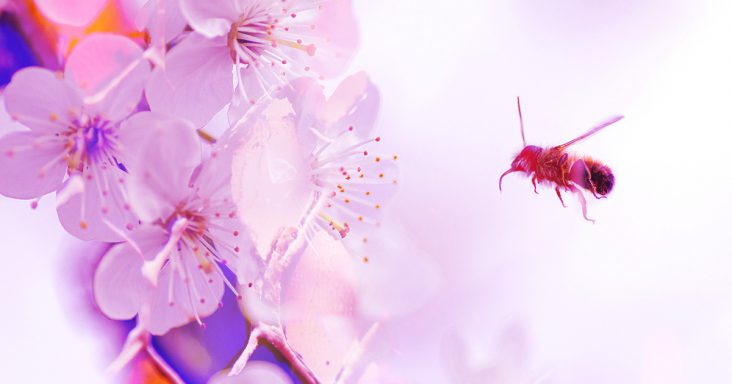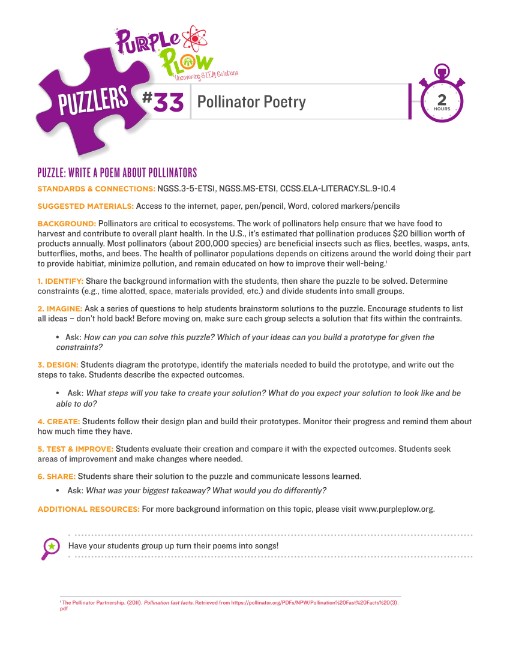

CCSS.ELA-LITERACY.CCRA.L.5, CCSS.ELA-LITERACY.W.5-12.2, CCSS.ELA-LITERACY.SL.9-10.4
Access to the internet, paper, pen/pencil, Word, colored markers/pencils
Pollinators are critical to ecosystems. The work of pollinators helps ensure that we have food to harvest and contributes to overall plant health. In the U.S., it’s estimated that pollination produces $20 billion worth of products annually. Most pollinators (about 200,000 species) are beneficial insects such as flies, beetles, wasps, ants, butterflies, moths, and bees. The health of pollinator populations depends on citizens around the world doing their part to provide habitat, minimize pollution, and remain educated on how to improve their well-being.

Get This Puzzler Now!
Download PDF